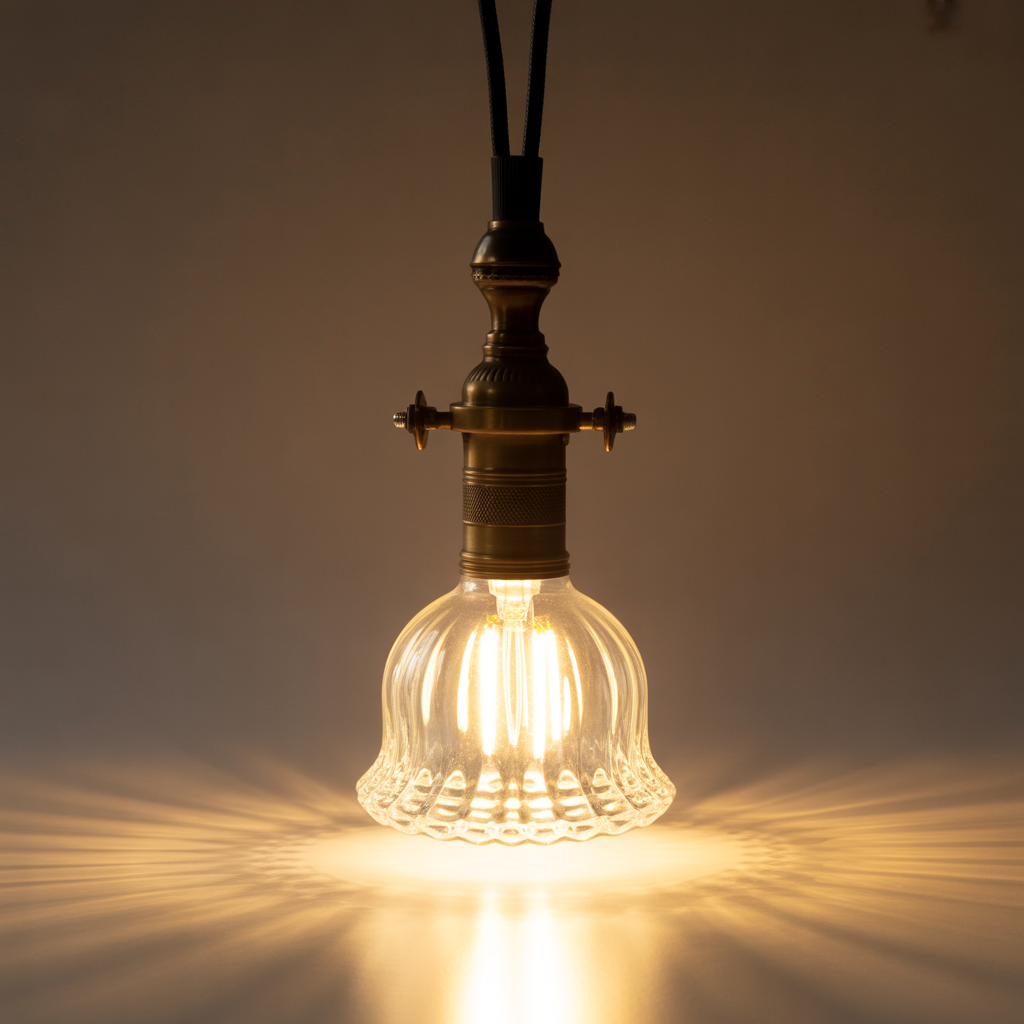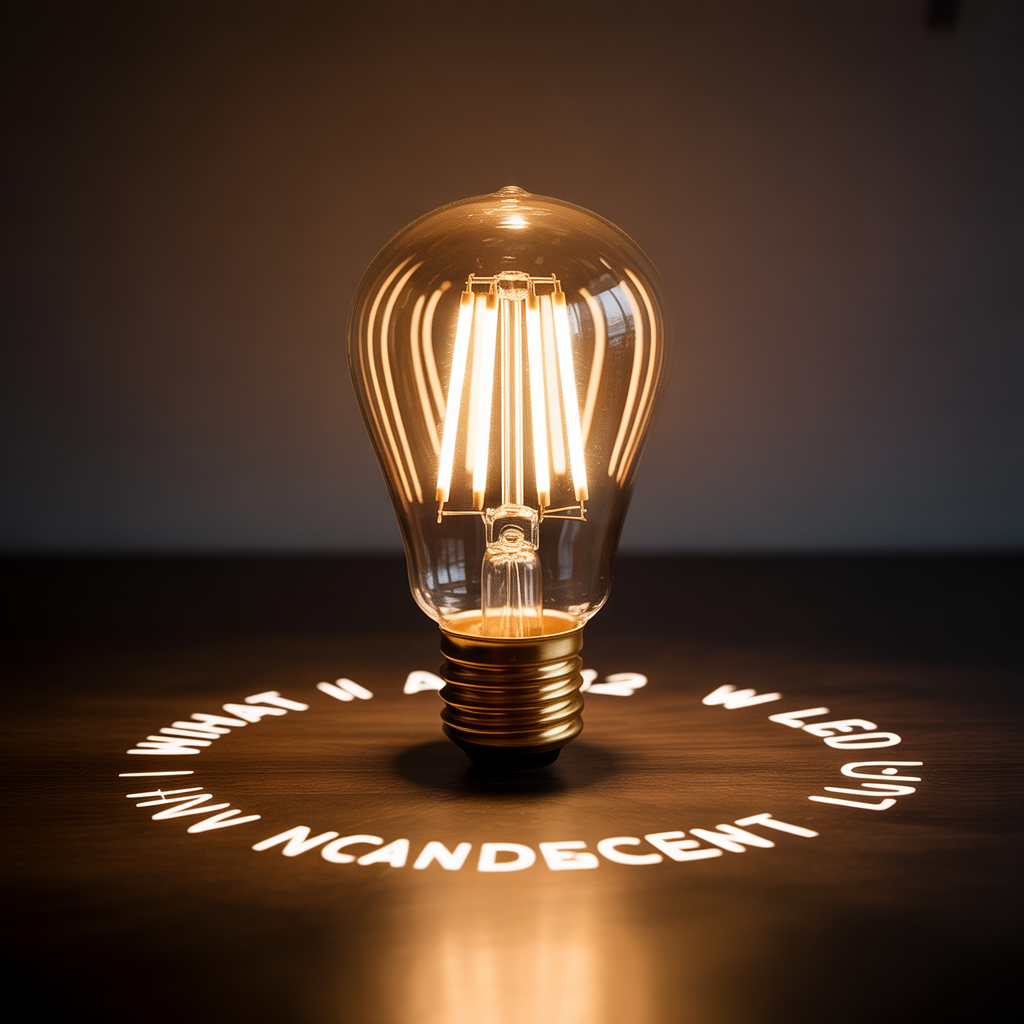What Is a 12 W LED in Incandescent Light? Need to Know Everything
Are you confused about the world of LED lighting and its relationship to traditional incandescent bulbs? It’s easy to get lost in the technical specifications, especially when comparing wattage. This comprehensive guide will demystify What is a 12 W LED in incandescent light? and help you understand the implications of this seemingly simple number. We’ll…
Are you confused about the world of LED lighting and its relationship to traditional incandescent bulbs? It’s easy to get lost in the technical specifications, especially when comparing wattage. This comprehensive guide will demystify What is a 12 W LED in incandescent light? and help you understand the implications of this seemingly simple number. We’ll delve into the differences between LED and incandescent technology, explore the benefits and drawbacks of LEDs, and provide you with the knowledge to make informed decisions for your lighting needs.
A 12W LED bulb is roughly equivalent to a 75W incandescent bulb in terms of brightness. LED bulbs use significantly less energy while providing the same amount of light, typically around 1100–1300 lumens. This makes LEDs more energy-efficient and longer-lasting than traditional incandescent bulbs.
Wattage (W) is a measure of power consumption. In simple terms, it tells you how much electricity a light bulb uses. A higher wattage means more electricity is consumed, leading to a brighter light (generally speaking) but also a higher electricity bill. Understanding wattage is crucial when comparing different types of light bulbs, as they have varying efficiencies.
What Is a 12 W LED in Incandescent Light?
Incandescent Bulbs: The Old Standard

Incandescent bulbs are the traditional type of light bulb that we’ve all grown up with. They work by heating a filament until it glows, producing light as a byproduct of heat. This process is very inefficient, meaning a significant portion of the energy consumed is wasted as heat, not light.
Read More: Dimming An LED: What Electronics Component Would Fade an LED Light Bulb?
LEDs: The Energy-Efficient Alternative
Light-emitting diodes (LEDs) are a more modern technology. They produce light through electroluminescence, where the flow of electricity through a semiconductor material directly emits light. This process is significantly more efficient than incandescence, producing much more light for the same amount of energy consumed.
What Does a 12W LED Mean?
A 12W LED bulb indicates that the bulb consumes 12 watts of power. However, the crucial point is that it’s equivalent to a much higher wattage incandescent bulb. This is because LEDs are far more efficient. A 12W LED typically produces a similar amount of light as a 60W or even 75W incandescent bulb.
The Importance of Lumen Output
While wattage indicates power consumption, lumens (lm) measure the amount of light produced. When comparing light bulbs, lumens are a more accurate indicator of brightness. A 12W LED can have a lumen output similar to a much higher wattage incandescent bulb due to its efficiency. Always check the lumen rating when selecting a replacement bulb.
Comparing Wattage and Lumens
It’s crucial to understand that wattage and lumens are not directly proportional across different bulb technologies. An incandescent bulb using 60W might produce 800 lumens, while a 12W LED might achieve a similar 800 lumens. The LED is far more energy-efficient because it achieves the same light output with significantly less energy consumption.
Color Temperature: Kelvin (K)
Another important factor is color temperature, measured in Kelvin (K). Lower Kelvin values (e.g., 2700K) represent warmer, more yellowish light, while higher values (e.g., 5000K) represent cooler, more bluish light. This preference is largely subjective, but understanding color temperature allows for choosing the right atmosphere for your space.
Color Rendering Index (CRI)
The Color Rendering Index (CRI) is a scale from 0-100 that indicates how accurately a light source renders colors compared to natural sunlight. A higher CRI (e.g., 80 or above) means more accurate and vibrant color reproduction. This is important for applications where accurate color representation is crucial, such as art studios or kitchens.
Read More: 12 Creative Hallway Ceiling Light Ideas & Hacks
Advantages of 12W LED Bulbs

-
- Energy Efficiency: Significantly lower electricity bills compared to incandescent bulbs.
- Longer Lifespan: LEDs typically last much longer than incandescent bulbs, reducing replacement costs.
- Durability: More resistant to shocks and vibrations.
- Environmental Friendliness: LEDs are more eco-friendly due to lower energy consumption and longer lifespan.
Limitations of 12W LED Bulbs
-
- Initial Cost: LEDs often have a higher upfront cost compared to incandescent bulbs.
- Heat Sensitivity: While more durable, some LEDs can be affected by extreme temperatures.
- Dimming Compatibility: Not all LEDs are compatible with all dimming switches.
12W LED vs. Other Wattages
A 12W LED offers a good balance of brightness and energy efficiency for many applications. However, depending on your lighting needs, you might consider higher or lower wattage LEDs. For instance, a 6W LED might suffice for a small bedside lamp, while a 18W LED could be better for a larger living room.
Choosing the Right LED for Your Needs
When choosing an LED bulb, consider the following:
- Lumens: The brightness of the bulb.Kelvin: The color temperature of the light.CRI: The color rendering index.Base Type: Ensure compatibility with your existing fixture.
- Dimmability: Check if it’s compatible with your dimmer switch.
Installing a 12W LED Bulb
Installing a 12W LED bulb is generally straightforward. Ensure the power is off before handling any bulb. Simply unscrew the old bulb and screw in the new LED bulb, ensuring a secure connection.
Understanding LED Bulb Specifications
LED bulb packaging typically lists several crucial specifications: wattage (W), lumens (lm), color temperature (K), CRI, base type (e.g., E26, E12), and lifespan (hours).
Disposal of Old LED Bulbs
LED bulbs contain small amounts of mercury, so they shouldn’t be disposed of in regular household trash. Check with your local waste management authority for proper disposal methods.
The Future of LED Lighting
LED technology continues to evolve, with improvements in efficiency, lifespan, and color rendering. We can expect even brighter, more efficient, and longer-lasting LED bulbs in the future.
Frequently Asked Questions
What is the lifespan of a 12W LED bulb?
A typical 12W LED bulb can last for 25,000 hours or more, significantly longer than incandescent bulbs.
Can I use a 12W LED bulb in any fixture?
Not necessarily. Ensure the base type of the LED bulb (e.g., E26, E12) is compatible with your existing fixture. Also, check the maximum wattage rating of the fixture to avoid overheating.
How much energy does a 12W LED bulb save?
A 12W LED bulb, equivalent to a 60W incandescent bulb, saves approximately 48W of energy per hour of use. The savings can be substantial over the bulb’s lifespan.
Are 12W LED bulbs dimmable?
Some 12W LED bulbs are dimmable, while others aren’t. Always check the packaging to see if it’s dimmable and compatible with your dimmer switch.
What is the best way to recycle LED bulbs?
Check with your local waste management or recycling center for the proper way to dispose of or recycle used LED bulbs, as they may contain trace amounts of mercury.
Final Thoughts
Understanding the intricacies of LED lighting, particularly the equivalence of a 12W LED to a higher-wattage incandescent bulb, is key to making energy-efficient choices. By considering lumens, color temperature, CRI, and other specifications, you can select the perfect 12W LED bulb for your needs. The long lifespan, energy efficiency, and environmental benefits make LEDs a compelling choice for residential and commercial applications alike. Remember to check for dimmability if you plan to use a dimmer switch and always dispose of old bulbs properly. Make the switch to LEDs today and experience the difference!

